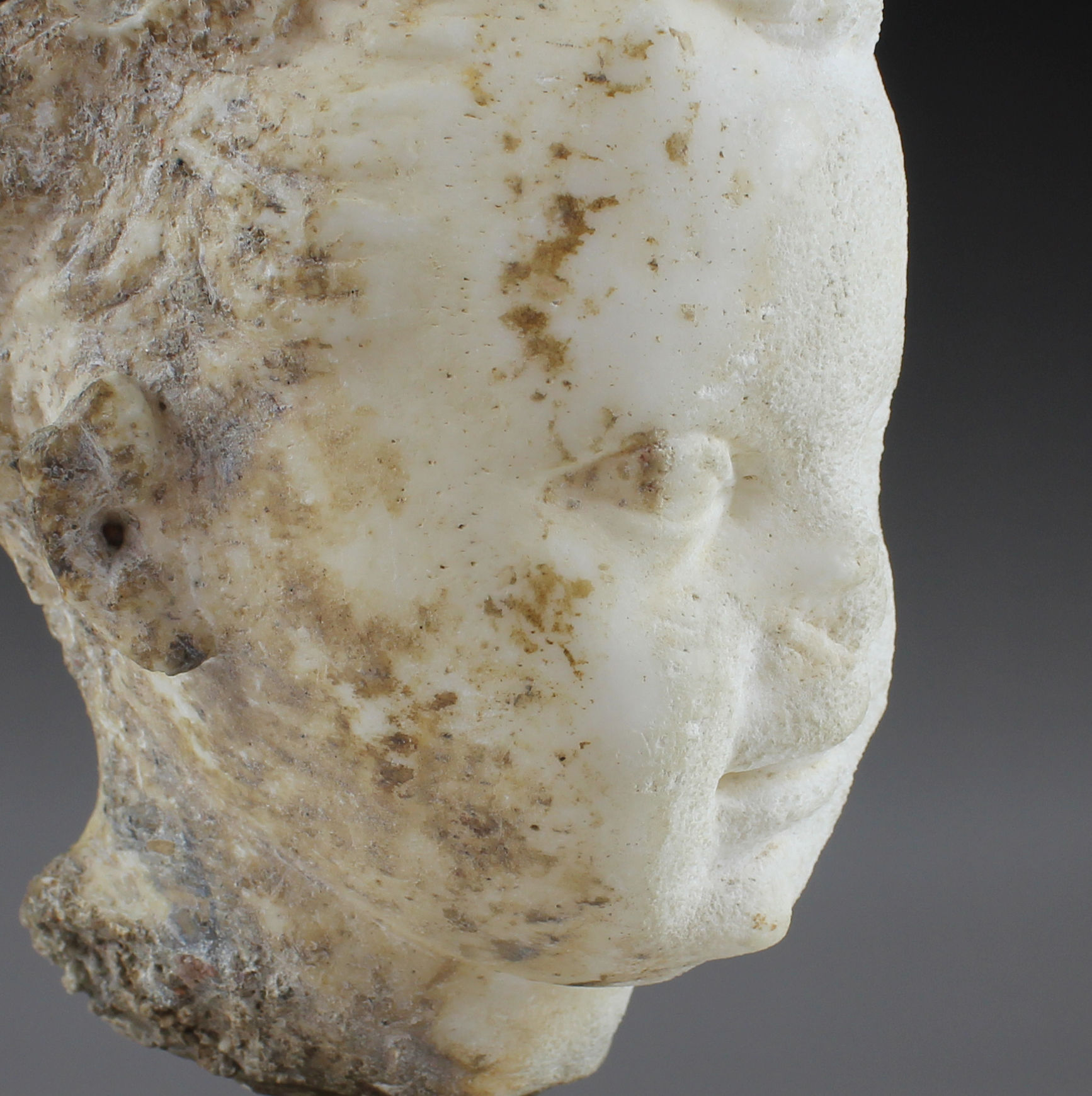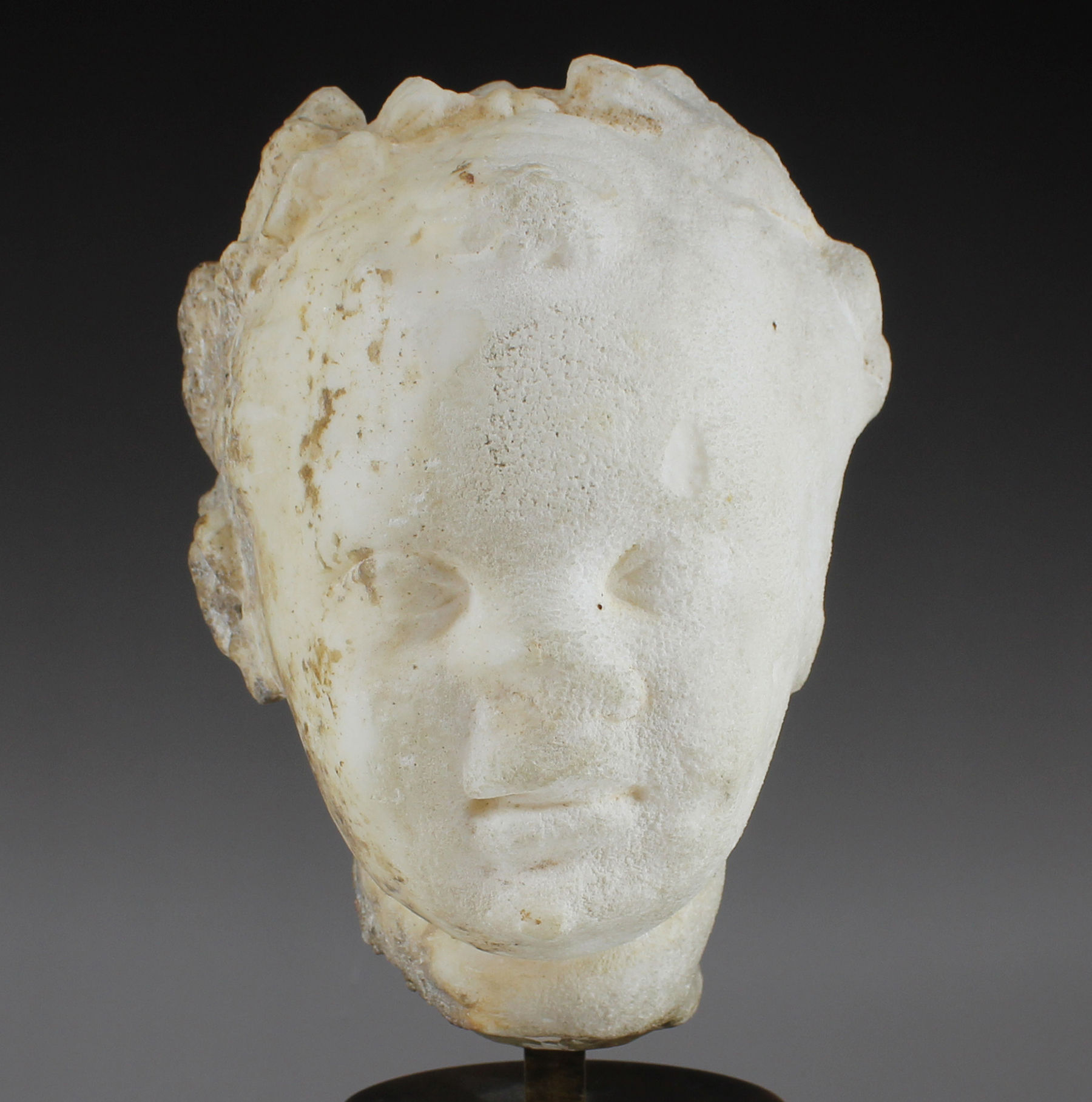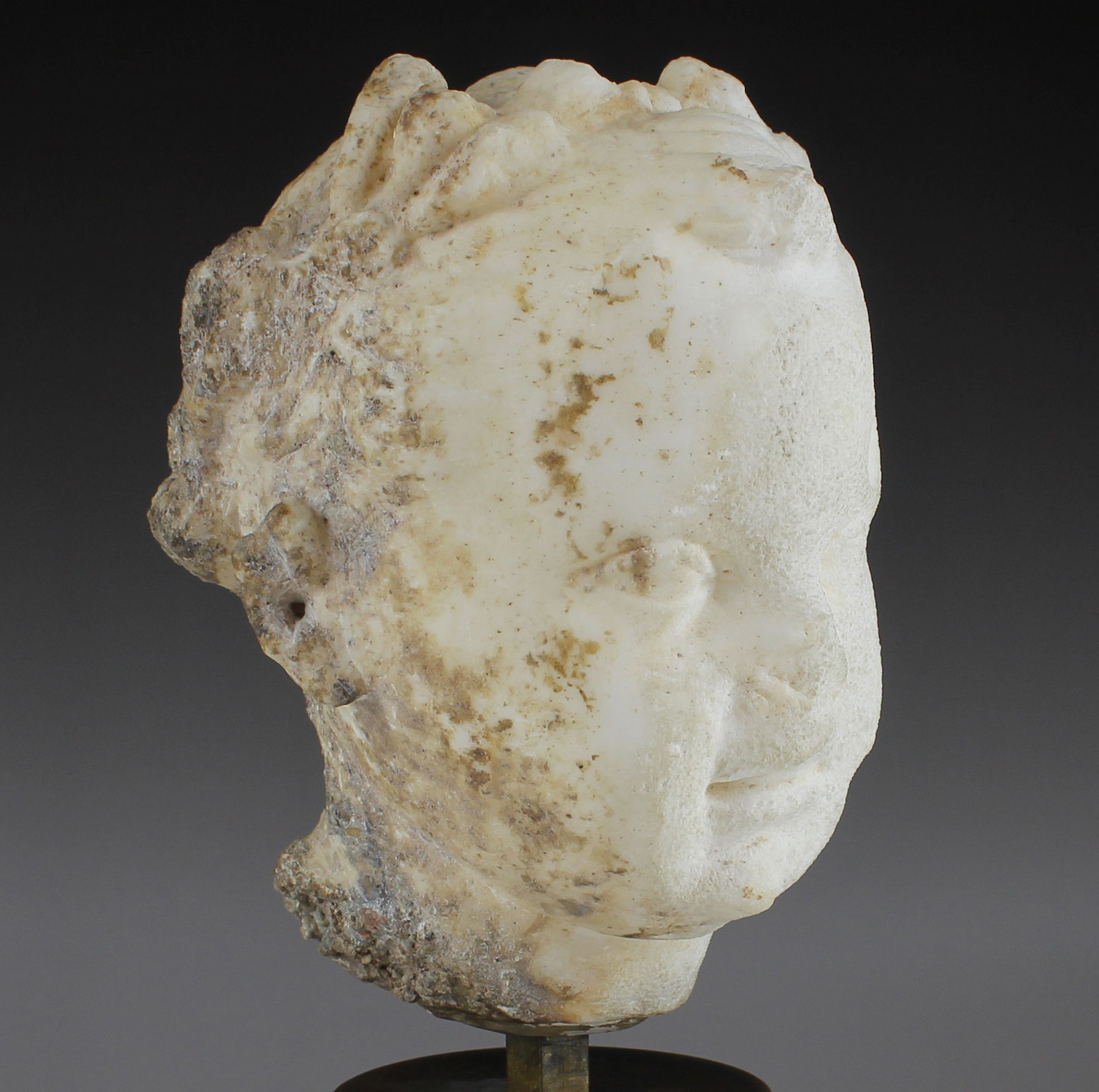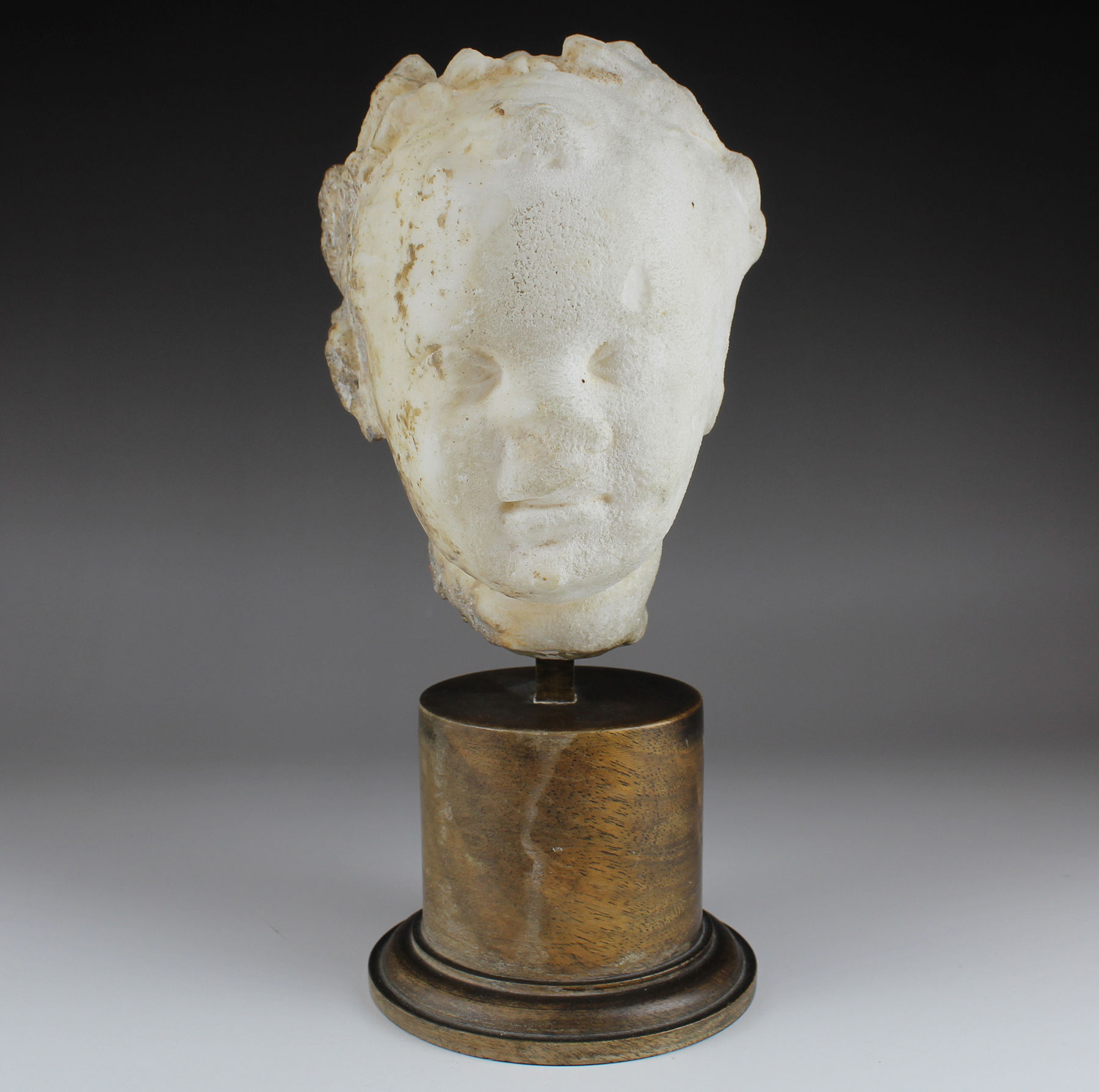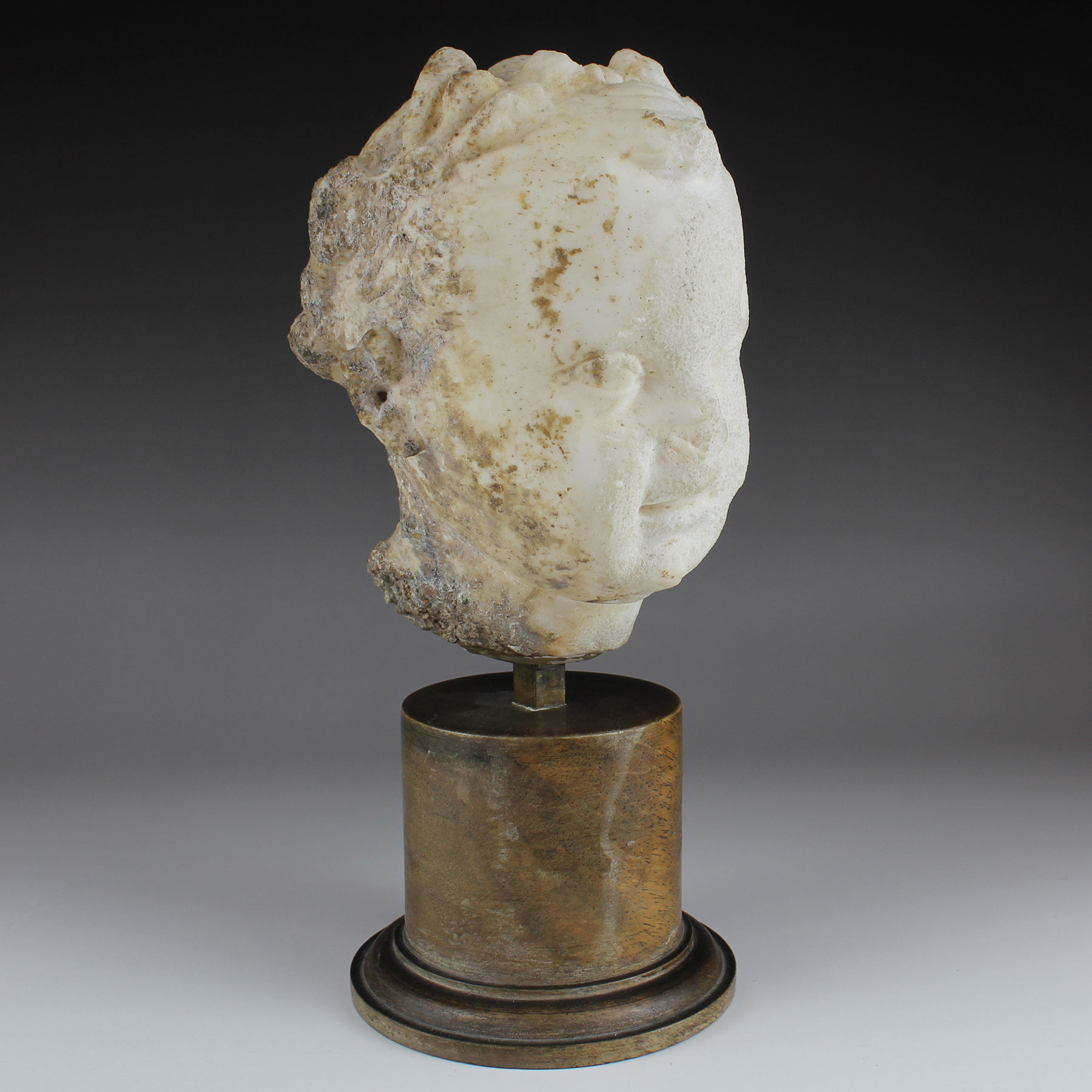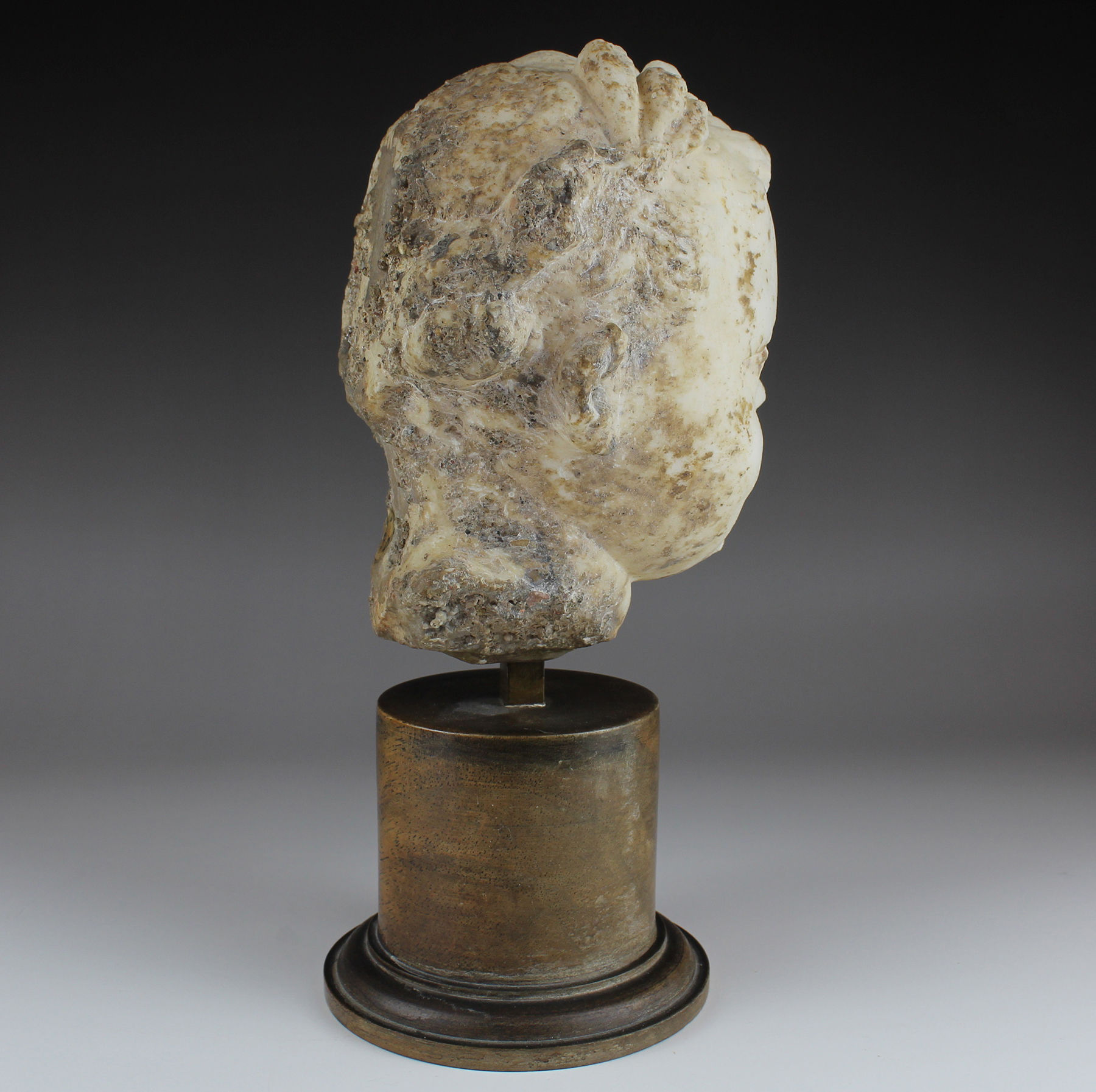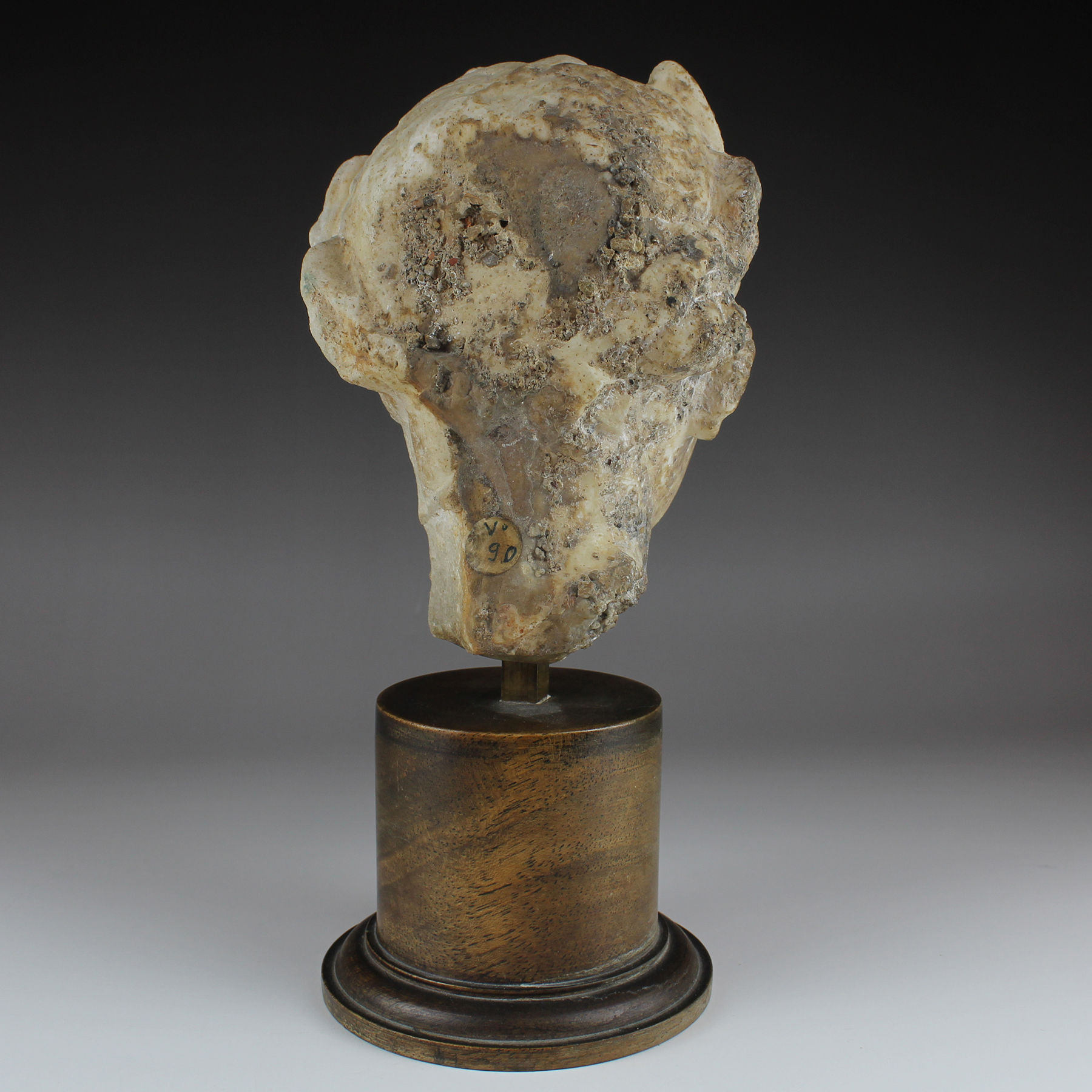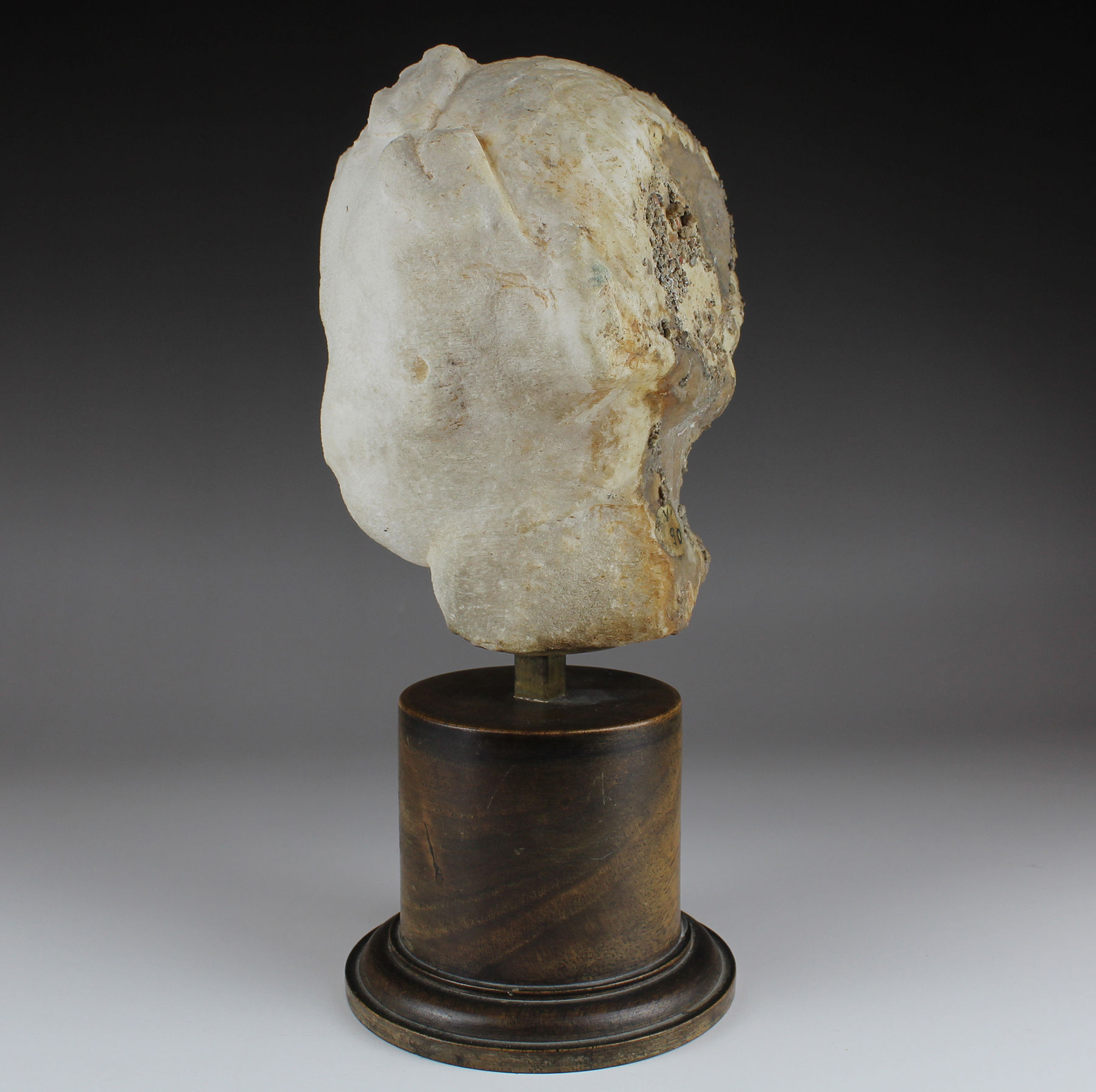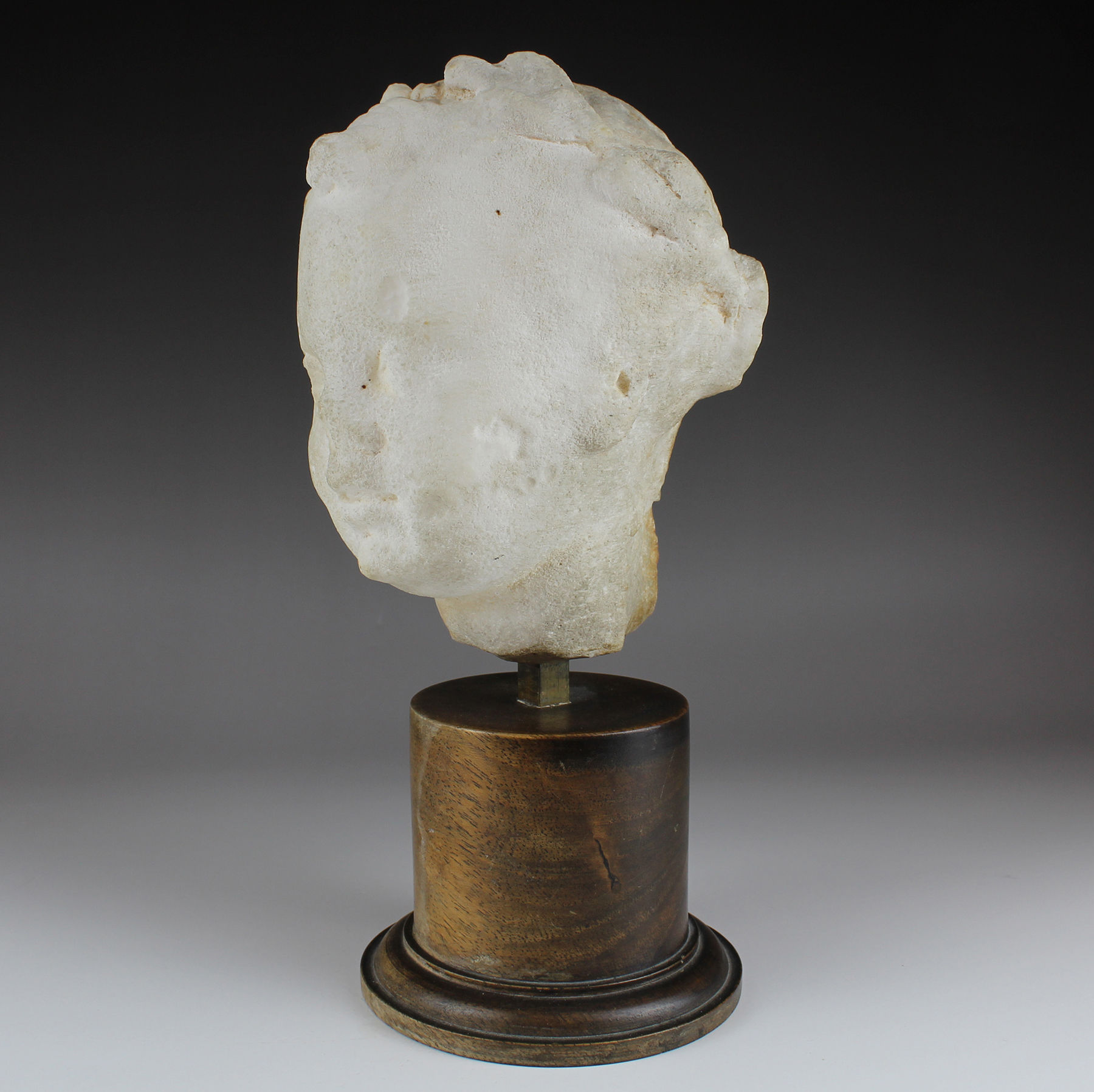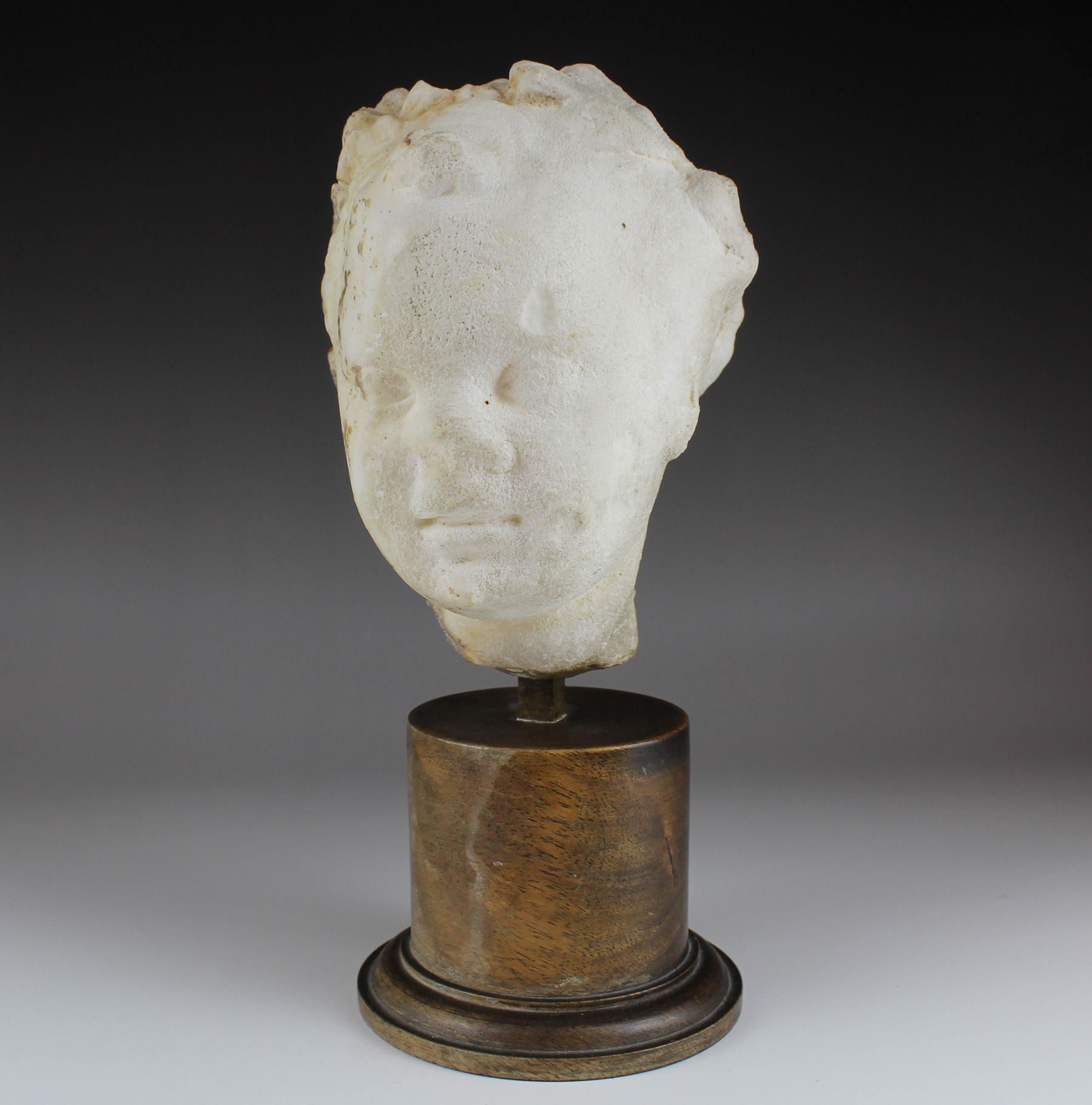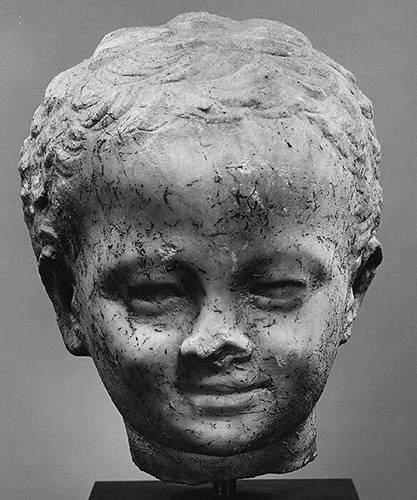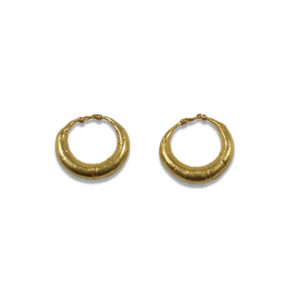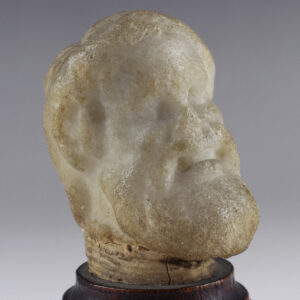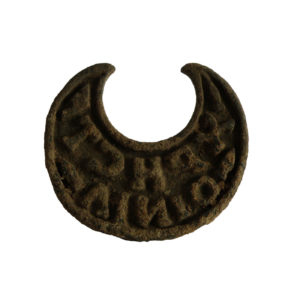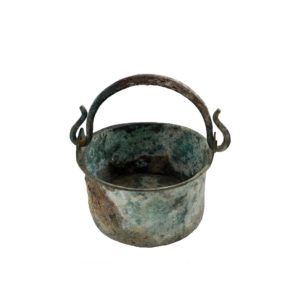Description
| ITEM | Portrait head of a laureated African child |
| MATERIAL | Marble |
| CULTURE | Roman |
| PERIOD | 1st – 2nd Century A.D |
| DIMENSIONS | 140 mm x 105 mm (without stand), 220 mm x 105 mm (inc. stand) |
| CONDITION | Good condition |
| PROVENANCE | Ex Dr. Pierre Calvelli collection, Aix-les-Bains, acquired between 1960 – 1980 |
The laureated African child head in marble from the Roman period represents a fascinating and unique example of Roman sculpture influenced by African and Mediterranean artistic traditions. This type of sculpture is notable for its distinctive combination of Roman artistic techniques and African iconography.
The “laureated African child head” typically features the head of a young African child adorned with a laurel wreath. The laurel wreath was a symbol of victory and honor in ancient Rome, often associated with emperors, military generals, and other high-ranking individuals. When this symbol is placed on the head of an African child, it is believed to convey a sense of triumph, perhaps representing a successful military campaign or another significant achievement.
These sculptures are primarily carved from marble and often display exquisite attention to detail, capturing the facial features, hairstyles, and the laurel wreath with great precision. They are believed to have been created during the Roman Empire, particularly in North Africa, which had a rich cultural and artistic heritage that blended indigenous traditions with Roman influences.
The exact purpose and cultural context of these sculptures remain a subject of scholarly debate. Some suggest that they may have been used as decorative elements in Roman homes or public spaces, while others propose that they could have had religious or commemorative significance.


